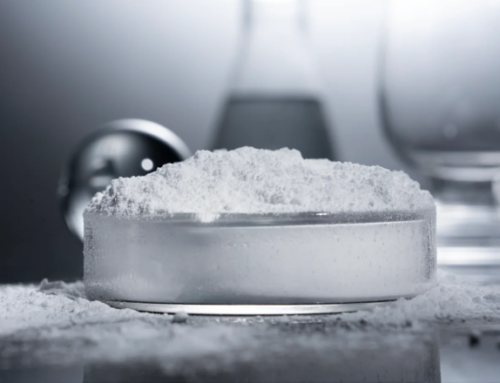Alkylation reaction, as an important organic synthesis method, can introduce alkyl groups into molecules, expand the diversity of molecular structures, and the product composition of alkylation reaction is crucial for understanding the reaction mechanism and optimizing the synthesis process.
The Three Characteristics of Alkylation Reaction
1.Alkylation reactions have high selectivity for specific groups and can be achieved by selecting different catalysts, reaction conditions, and group structures.
2.Alkylation reactions do not require extreme reaction conditions such as high temperature, high pressure, and strong acids and bases. The reaction is mild and can generate multiple substituted products, which are used in the synthesis of many compounds sensitive to high temperature and high pressure.
3.Alkylation reaction is a reversible reaction, so alkylbenzene can undergo disproportionation reaction, where one molecule of alkylbenzene is dealkylated to form benzene and another molecule of alkylbenzene is dealkylated to form dialkylbenzene.

Commonly used catalysts for alkylation reactions
The industrial catalytic alkylation process can be divided into two types: liquid-phase method and gas-phase method, with different catalysts used.
1. Liquid phase alkylation catalysts are mainly used:
①Acid catalysts, commonly used include sulfuric acid and hydrofluoric acid. The alkylation of isobutane with propylene and butene is currently mainly carried out using hydrofluoric acid. The alkylation of benzene using high carbon olefins or C10-C18 chlorinated alkanes, as well as the alkylation of phenols, is mainly carried out using sulfuric acid.
② Fred Crawford catalysts, such as aluminum chloride hydrogen chloride and boron fluoride hydrogen fluoride, are commonly used for the alkylation of benzene with ethylene, propylene, and high carbon olefins, as well as the alkylation of phenols.
2. Gas phase alkylation catalysts are mainly used:
①Solid acid catalysts, such as diatomaceous earth phosphate, are used for alkylation of benzene with ethylene, propylene, and naphthalene with propylene;
②Metal oxide catalysts, such as alumina, alumina silica, magnesium and iron oxides, and active clay, are commonly used for alkylation reactions of benzene with ethylene, phenol, and methanol.
③Molecular sieve catalysts, such as ZSM-5 molecular sieve catalysts, are mainly used for the alkylation process of benzene and ethylene.
Alkylation reaction products
The hydrogen on the A carbon of the carbonyl group is weakly acidic, and the A carbon atom of the carbonyl group can undergo alkylation reaction with halogenated alkanes under the action of strong bases (such as sodium amino and sodium hydride), generating A carbon alkylation products.

Analysis of influencing factors
The composition of alkylation products is influenced by various factors, and different functional groups and stereoconfigurations of substrates will lead to different reaction pathways and product choices.
The stereoconfiguration of molecules has a significant impact on the generation of reaction products. Stereosteric hindrance can hinder attacks at certain positions, leading to positional selectivity in the reaction. Different stereoconfigurations may also affect the reaction rate and product distribution.
In stereochemistry, the arrangement of atoms, functional groups, and bonds in molecules can affect the positional selectivity of the reaction. Stereosteric hindrance can hinder specific positions in the reaction, making it more likely that the reaction will occur at other positions. This selectivity leads to the formation of specific products, thereby achieving the construction of specific compounds in organic synthesis.
The stereoconfiguration of molecules can also affect the reaction rate and product distribution. Different stereoconfigurations may affect the activation energy of the reaction, thereby affecting the reaction rate. Different stereoconfigurations may lead to different stability of intermediates, thereby affecting the generation of different products. Stereosteric hindrance and spatial arrangement can affect the formation and stability of intermediates, thereby affecting product distribution.
When there are substituents on the substrate molecule, the electronic and steric hindrance effects of these substituents also play a crucial role in the alkylation reaction, which affects the attack position of alkyl radicals and directly affects the distribution and selection of products.
The electronic effect and steric hindrance effect of substituents can jointly affect the position selectivity and product distribution of alkylation reactions. Based on the properties of substituents, alkyl radicals may tend to attack different positions, leading to the generation of different products. This phenomenon can be used in organic synthesis to achieve selective substitution at specific positions and obtain the desired products.

Application of Alkylation Reaction
Alkylation reactions have a wide range of applications in chemical organic synthesis chemistry, and can be used in various fields. In the field of materials, alkylation reactions can be used to prepare polymer materials with different structures.
Alkylation reactions have many applications, such as in the manufacturing of chemicals such as fuel additives, fragrances, pharmaceuticals, and coatings. A common alkylation reaction is alkyl halide reaction, in which halogen compounds such as chlorine, bromine, or iodine are used as alkylation reagents. These reagents can be added to other organic compounds to generate new compounds, thereby altering their chemical and physical properties.
Alkylation reactions can also be used to improve fuel performance. For example, adding methyl groups to alkane fuels can improve combustion efficiency and energy generation. In addition, alkylation reactions can also be used to manufacture organic synthetic materials, such as polymers and resins.
In summary, alkylation is an important organic chemical reaction that can be used to manufacture various chemicals, including fuel additives, fragrances, pharmaceuticals, and coatings. By adding alkyl groups, it can change the properties and uses of compounds, making it widely used in industrial and scientific fields.
Article source: www.xianjichina.com
M&J International Trading Co., Ltd





